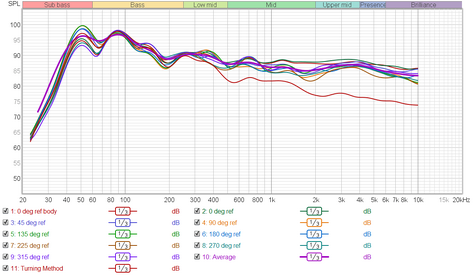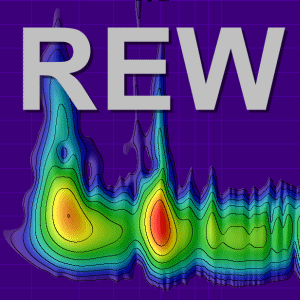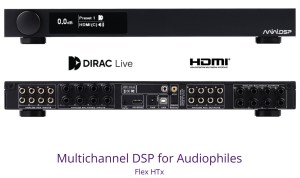TekniskeBureau
New Member
Hi there,
I'm observing a rather strange behavior, that I was hoping someone could enlighten me on. My best guess is that it has something to do with how REW averages.
My background is that I'm a Mechanical Engineer with specialty in vibrations. I'm trying to get a better understanding of acoustics, and I'm reading up on the acoustic literature. I'm also an active musician and have a rehearsal space / mini-studio, where I'm working on improving the acoustics. I'd like to do measurements at each step of the process (installing bass traps, diffusers, new floor etc.). I know that some of these things might be a bit out of scope, since most of you are probably using REW for measuring speakers in a room, whereas I'm trying to get measures for just the room itself, not a related to a specific set of speakers (the main focus is band rehearsal and recording).
I'm following the guidelines in the (brand new) EU standard for acoustic spaces for rehearsal rooms ISO23591:2021 and the associated standards for measuring acoustic room parameters (ISO3382-1/2). It seems entirely possible for me to do measurements of the the room. I've mapped out two speaker positions in combination with 6 measurement points, giving a total of 12 measurements. Typically, you average these to get an overall estimate frequency response, decay time, clarity etc. for the whole room. I have a calibrated measurement microphone, a very clean interface / preamps, an SPL-meter and a decent flat-response studio speaker.
The thing is that the mic is omnidirectional, but the speaker is not. However, following the findings of a research article by Nikolaos M. Papadakis, it seems reasonable to substitute a dodecahedron omnidirectional speaker with a normal studio grade speaker, and manually average several responses. I've mounted a single speaker on a chair that can turn and angled in a 45 degree position, in order to avoid too much direct response (the room is not that big). See the picture below:

So my idea was this: Instead of doing 8 separate measurements in different rotations, I could do a single measurement but with 8 repeated sweeps, changing the rotation between each sweep.
Below, you can see 8 separate measurements done with a single sweep per measurement, as well as an averaged response:

The extra 0-deg ref body, is to check if me lying below the speaker (as I will have to in the next test) makes a difference for the results. It seems to have very little effect on the results.
Below is the the results of both the above tests, the average of those curves and a single measurement doing 8 sweeps and making the rotation of the chair in-between each sweep. Purple is the average of the previous test and Red is the 1 Measurement / 8-Sweep 'turning method'.

Here's just a picture of the Average vs. the Turning Method, which is a bit more simple to compare.

I've done the measurements several time to confirm the trend. I was expecting that these seemingly different methods should give close to exact results, but they don't. I've also compared measurements for a single sweep vs. several sweeps in the same rotation, and the results are here also almost identical.
How does the averaging in REW work when several sweeps are used vs. several measurements? I suppose both are done in the frequency domain?
Sorry for the length post, hope that someone can help me out
Thanks! All the best, Emil
I'm observing a rather strange behavior, that I was hoping someone could enlighten me on. My best guess is that it has something to do with how REW averages.
My background is that I'm a Mechanical Engineer with specialty in vibrations. I'm trying to get a better understanding of acoustics, and I'm reading up on the acoustic literature. I'm also an active musician and have a rehearsal space / mini-studio, where I'm working on improving the acoustics. I'd like to do measurements at each step of the process (installing bass traps, diffusers, new floor etc.). I know that some of these things might be a bit out of scope, since most of you are probably using REW for measuring speakers in a room, whereas I'm trying to get measures for just the room itself, not a related to a specific set of speakers (the main focus is band rehearsal and recording).
I'm following the guidelines in the (brand new) EU standard for acoustic spaces for rehearsal rooms ISO23591:2021 and the associated standards for measuring acoustic room parameters (ISO3382-1/2). It seems entirely possible for me to do measurements of the the room. I've mapped out two speaker positions in combination with 6 measurement points, giving a total of 12 measurements. Typically, you average these to get an overall estimate frequency response, decay time, clarity etc. for the whole room. I have a calibrated measurement microphone, a very clean interface / preamps, an SPL-meter and a decent flat-response studio speaker.
The thing is that the mic is omnidirectional, but the speaker is not. However, following the findings of a research article by Nikolaos M. Papadakis, it seems reasonable to substitute a dodecahedron omnidirectional speaker with a normal studio grade speaker, and manually average several responses. I've mounted a single speaker on a chair that can turn and angled in a 45 degree position, in order to avoid too much direct response (the room is not that big). See the picture below:
So my idea was this: Instead of doing 8 separate measurements in different rotations, I could do a single measurement but with 8 repeated sweeps, changing the rotation between each sweep.
Below, you can see 8 separate measurements done with a single sweep per measurement, as well as an averaged response:
The extra 0-deg ref body, is to check if me lying below the speaker (as I will have to in the next test) makes a difference for the results. It seems to have very little effect on the results.
Below is the the results of both the above tests, the average of those curves and a single measurement doing 8 sweeps and making the rotation of the chair in-between each sweep. Purple is the average of the previous test and Red is the 1 Measurement / 8-Sweep 'turning method'.
Here's just a picture of the Average vs. the Turning Method, which is a bit more simple to compare.
I've done the measurements several time to confirm the trend. I was expecting that these seemingly different methods should give close to exact results, but they don't. I've also compared measurements for a single sweep vs. several sweeps in the same rotation, and the results are here also almost identical.
How does the averaging in REW work when several sweeps are used vs. several measurements? I suppose both are done in the frequency domain?
Sorry for the length post, hope that someone can help me out
Thanks! All the best, Emil













